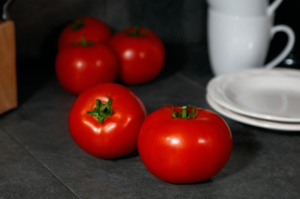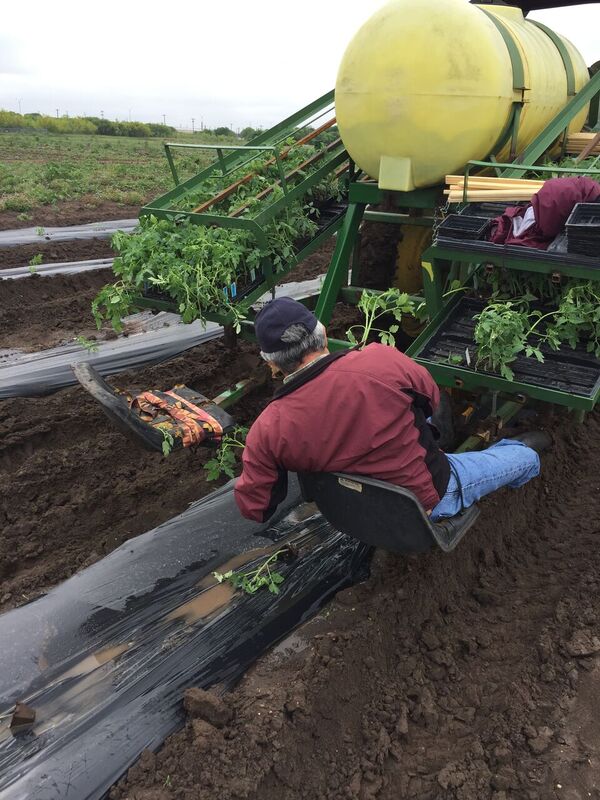Texas A&M AgriLife trials yield another top tomato
Red Snapper chosen ‘rodeo tomato’ for 2020 San Antonio Livestock Show and Rodeo

The hybrid Red Snapper tomato has been selected the official “rodeo tomato” for the 2020 San Antonio Livestock Show and Rodeo, which runs Feb. 6-23.
Picking the ‘top tomato’
“Each year, a new tomato variety is selected by Texas A&M AgriLife to be the official tomato of this event,” said David Rodriguez, Texas A&M AgriLife Extension Service horticulture agent for Bexar County. “We have a more than 20-year tradition of selecting what tomato will be named the rodeo tomato. And this year we selected the Red Snapper due to its exceptional aesthetic and physiological traits.”
Rodriguez said the Red Snapper was just one of many tomato plant varieties tested during the annual AgriLife tomato trials.
A half-century of Texas A&M AgriLife tomato trials
“These trials began about 50 years ago with Verstuyft Farms in Von Ormy,” said Larry Stein, Ph.D., AgriLife Extension horticulturist, Uvalde. “These are the oldest and largest of our tomato trials throughout the state.”
Stein said the farm typically provides 1-3 acres for the trials and helps them test 20-30 varieties each year.

“We also plant some of the more well-known standard varieties, which we use as a baseline for comparison,” Stein said. “If the new varieties do not perform as well or better than the popular standard varieties, they’re obviously not going to make the cut.”
Stein said tomato trials are typically held in the spring. Some of the performance factors used to determine which varieties are the best include fruit quality and aesthetics, yield and plant health, including disease resistance.
“We also want to make sure the tomato varieties grow well in Texas and have a substantial enough canopy to shield the fruit from the harsh sun we get in many parts of the state,” he said. “We test determinate plants that grow at least 2-3 feet in height and have adequate foliage to protect the fruit from sunburn.”
Stein said Red Snapper is well adapted to the state’s growing conditions and has high resistance to many plant diseases, including Alternaria skin canker, verticillium wilt, fusarium wilt, fusarium crown and root rot.
‘Potting up’ tomatoes to help ensure success
Rodriguez suggested backyard and small-acreage gardeners pot the tomato plant into a 1-gallon container before setting it out in the garden for the spring.
“This will help the plant succeed because you can then put it into the ground when soil and air temperatures are warm enough to support plant growth and fruit setting,” he said.
For best results, transplants should be “potted up” with a premoistened, peat-based potting mix and later supplemented with copious amounts of a slow-release nitrogen-rich fertilizer made especially for container plants.
Rodriguez said the potted tomato plants will develop a more extensive root system and can then be transplanted to the vegetable garden or a much larger diameter container. He also noted tomato plants will produce a higher quality fruit if caged. Cages should be at least 4-5 feet tall with a 16- to 20-inch diameter. They should also be anchored to prevent high winds from blowing them over.

“Six to eight weeks after transplanting, you should see a nice crop of tomatoes,” he said.
The rodeo tomato as well as Texas Superstar plants, which are chosen for their beauty and adaptability to Texas climates, are available for sale at the Bexar County Master Gardener display at the H-E-B Little Buckaroo Farms tent on the rodeo grounds. Proceeds from the sale of these plants will be used to help fund Junior Master Gardener scholarships.


